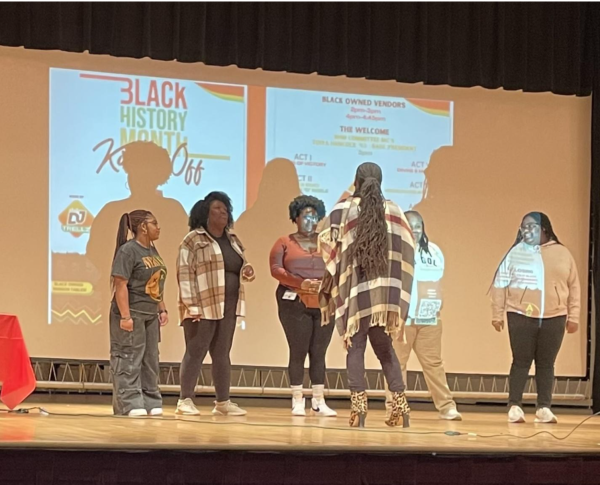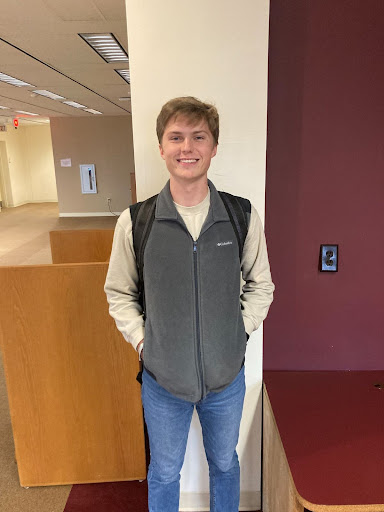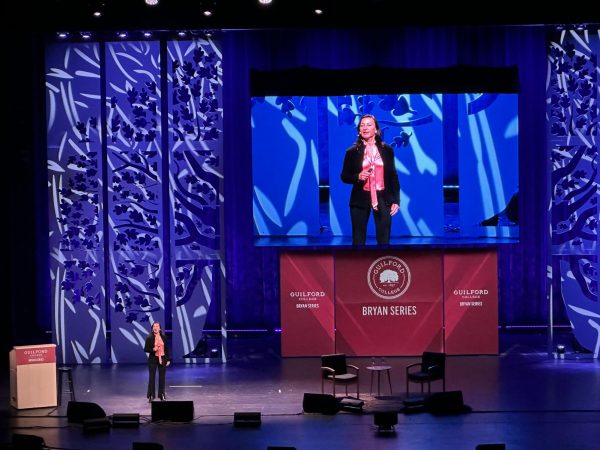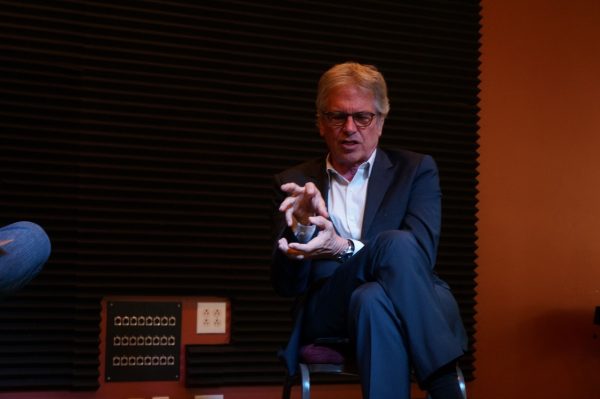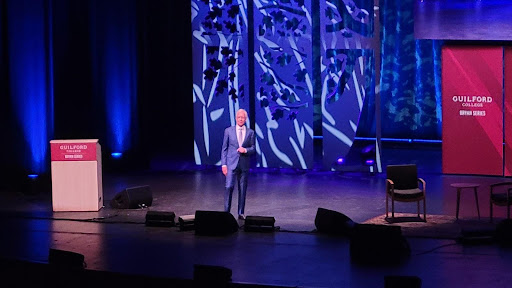Nydorf, McAlister present results from research
From boxwood and catalpa wood carvings to children’s picture books, the faculty research presentations representing Guilford’s art and English and creative writing departments on Wednesday, April 11 featured the recent projects of Professor of Art Roy Nydorf and Visiting Instructor of English Caroline McAlister.
The presentations were held in the Experimental Classroom of Hege Library and provided insights into Nydorf’s work with wood carving in “Nature, Myth, and Imagination,” along with McAlister’s research on Black Mountain artists in “From Tolkien to Black Mountain: Writing Non-Fiction Picture Books That Matter.”
Nydorf opened the presentation by highlighting his four main goals, which included creating new workshop spaces and showrooms for exhibiting artwork, developing larger-scale wood sculptures and woodblock prints, visiting museums and cultural sites that focus on a variety of historic, ethnographic and contemporary art collections and designing a new course in wood carving and native arts.
Nydorf spoke about his experience renovating historic log buildings into new workshop and spaces and visiting totem poles in British Columbia, while preparing for his woodcarving course.
“The power of these stories, these myths, these monumental structures is something that gets me in the gut in the fact that they are carved out of wood, in the histories, in the tragedies, in the meaning,” said Nydorf. “It’s just really embedding into me. And the more that I see, the more that I desire to see and to be around them.”
Sharing several of his wood pieces, Nydorf shared insight on the craft of woodcarving.
“The artists that I admire throughout time are the ones that develop the craft in such a way, with a vision, that there literally is a suspension of disbelief,” said Nydorf.
The author of “John Ronald’s Dragons: The Story of J.R.R. Tolkien” and “Jack and Warnie’s Wardrobe,” McAlister shed light on the intended purpose for her picture books.
“In writing those picture books, I got very interested in creativity and inspiration,” said McAlister. “And my intent was, in both books, to make a connection between the writer’s inner, imaginative life as a child and the writer’s later life as a creative artist. I want the child reader to sense that their own life is diffused with creative possibility and promise.”
Sharing the story of Ruth Aiko Asawa, McAlister discussed her most recent research and work while emphasizing the power of storytelling.
“I was reading Christopher Benfey’s excellent book, ‘Red Brick, Black Mountain, White Clay’ about Black Mountain and I ran across this sculpture with (Asawa), and I just fell in love with her as a subject,” said McAlister. “And the reason I fell in love with her is, and wanted to write the picture book about her, was I could, tell the story of the internment of Japanese-Americans, which I think is a very important story to tell right now, and of course one that’s connected to Guilford College.
“She also had the incredible resilience and work ethic that I admired. She was an advocate for art in the public schools, there is a public school in San Francisco named after her. She believed art should be taught by professional, working artists, and she taught children learn how to problem solve by creating art.”
McAlister, who has been going to Hollins University the past three summers for her Master of Fine Arts in writing for children, brought attention to the audience of picture books.
“Picture books have a double audience,” said McAlister. “I think it’s always the adult reading to the child, and there’s got to be language that’s interesting and there’s got to be visuals that are interesting.”
Facilities Administrative Assistant Kelly Taylor found the presentations to be informational and insightful.
“I’m a painter and a printer so most of my work is 2D, two-dimensional, and Roy makes me think of doing work more three-dimensionally,” said Taylor. “And I’m also a bit of a writer, I have an English degree from Guilford too, and so Caroline made me think of the writing part.
“I’m working on a children’s book also, but I’m also an artist, so it was interesting to hear the way that it’s done, with the writer is separate from the artist. It would seem to me like that it would be better if they could collaborate, but I would come to that as the artist and the writer. It was interesting to hear a little bit of information on how that works, the process of it in working with an editor.”




